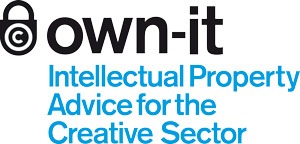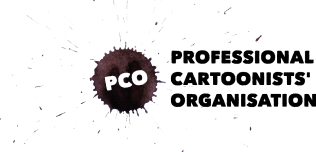 Following on from our recent post about copyright, here‘s some straightforward advice from Silvia Baumgart, Programme Manager at Own-it, about how a cartoonist (or any other kind of artist) can protect their work online and elsewhere:
Following on from our recent post about copyright, here‘s some straightforward advice from Silvia Baumgart, Programme Manager at Own-it, about how a cartoonist (or any other kind of artist) can protect their work online and elsewhere:
- Sadly, it is practically impossible to ensure that work appearing on the internet is not being downloaded, copied or amended without permission. Own-it strongly recommends that any images of your work are uploaded at low resolution (typically 72 dpi) and watermarked, both of which will make it harder for someone to misappropriate your work.
- All watermarks should include the copyright symbol (©), your name, and ideally the date of creation or date of first publication.
- Another option – when emailing images to potential clients – is to use Creative Barcode, a service that protects your images and requires a client to click through and agree to terms of use before they can even see your work.
- If you’re happy for your work to be used by others in limited circumstances, you can use Creative Commons licences. This non-profit service enables creative work to be shared, with the copyright holder deciding how it is used and for what purpose.
- Silvia describes Creative Commons as a legally simple and flexible licensing system, but also sounds a note of caution. Disadvantages can include the fact that the licences it grants are perpetual and irrevocable (so you cannot change your mind at a later date). If you allow other users to make “derivatives” of your work, you have no control over the extent to which they modify it, and there is also a grey area when it comes to what is classed as commercial or non-commercial use. Find out more before making a decision.
- Social-networking sites have created another potential minefield for artists. Twitter, Facebook and the rest all have their own particular terms and conditions, but in general, by sharing your work on these sites you indemnify all service providers against any claims brought against them by third parties in relation to the content you post.
- When it comes to social networks, Own-it recommends that you only post your own work, unless you have permission from the copyright holder. If you don’t have permission but are confident that you are sharing the work in order to promote it, you should always credit the author, with a link to their website, and ideally let them know you have posted it.
- If pitching for a job and sharing your designs with a potential client, Silvia recommends that you ask the client to sign a non-disclosure agreement in advance, use Creative Barcode (as above), or send an email ahead to say that anything discussed or shared will be treated as confidential.
- Copyright also gives a cartoonist or illustrator the moral right to object to a publisher cropping or editing their images. In reality this is rarely done for fear of losing repeat business – but it is important to note that, in principle, the copyright holder has the right to expect their work to be used as originally supplied.
Own-it provides free legal advice to help artists solve intellectual property issues. Our thanks to Silvia for allowing us to share some of her advice on the blog.
